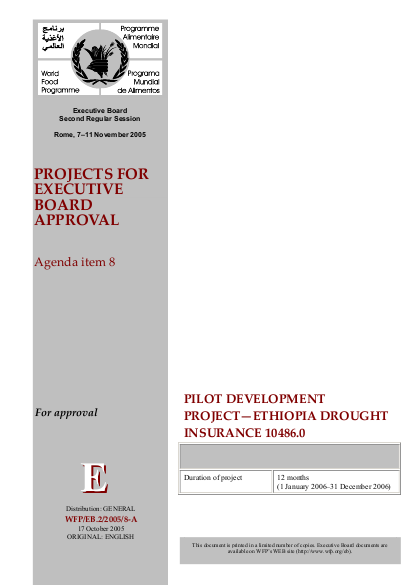
The objective of this pilot development project is to contribute to an ex-ante risk-management system to protect the livelihoods of Ethiopians vulnerable to severe and catastrophic weather risks. The pilot uses a weather derivative to demonstrate the feasibility of establishing contingency funding for an effective aid response in the event of contractually specified severe and catastrophic shortfalls in precipitation.
The model covers 17 million people, living in 278 woredas (districts) in Ethiopia, which can be associated with 26 class 1 weather stations. The average income loss of this population is US$28 million per year, with a maximum loss of US$80 million in 1984 and a theoretical worst-case potential loss of US$154 million. This is the cost of the loss to the population, not the cost of the operation to transfer that value to them. For this pilot project, pastoralists will not be covered because of the difficulty in obtaining demographic and weather data for the areas in which they are concentrated.
